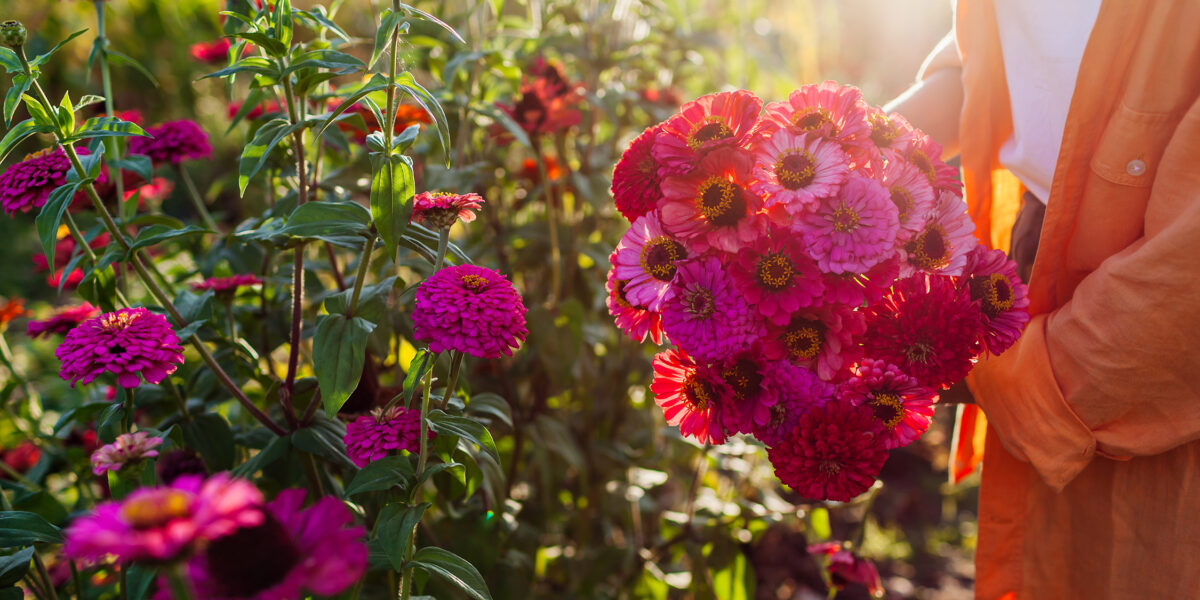
8 Things You Need to Do to Help Your Garden Beat the Summer Heat
Your late-summer garden checklist.

Gardens are abuzz and harvest baskets are full. Here’s how to soak up the last of the season while prepping for the next.
Plant
—It might feel too early, but it’s time to jump-start planting for the cooler seasons ahead. Begin direct sowing transplant-sensitive plants, such as onions and leeks, while starting brassicas in individual cell trays. Try heat-tolerant varieties like Chinese garlic chives and Autumn Star Kalettes, which need the warm days for germination but won’t bolt on you before fall.
—It’s bulb-buying season. This year, try Western natives, such as mariposa lily and wild hyacinth, to add some localized interest to flower beds. Interested in growing saffron? Order Crocus Sativus corms now for early fall planting, as they tend to sell out quickly.

Raquel Lonas/Getty Images
Harvest
—The garden is at an all-time abundance and needs a consistent comb-through for plants and flowers to continue producing. Pay special attention to runner beans, herbs, tomatoes, cucumbers, and squash—sometimes checking twice in a day as they can ripen quickly. Don’t forget to snip zinnias, cone flowers, cosmos, and salvias for gorgeous kitchen arrangements and ongoing blooms through fall.
—Lavender is at its peak! Cut stems just before the flowers are fully bloomed. Harvesting on warm days is crucial for high oil content and maximum fragrance. Try your hand at crafting lavender wands, a 17th-century French technique in which freshly cut flowers are folded and woven together with beautiful ribbons, enclosing the fragrant lavender blossoms inside.

Elke Meitzel/Getty Images
Maintain
—Keep an eye on fruit trees. Continue a deep watering schedule, being especially diligent during heat spells. Prop up any overladen branches to prevent limb breakage and use mesh bags to cover ripening fruit to protect from grabby squirrels and birds.
— Give melons and pumpkins a lift! Developing fruit and gourds need relief from damp soil to prevent rot and discoloration as they continue to grow. While there are specialty garden cradles available, any colander or woven bowl will do—just make sure there’s enough airflow to keep everyone happy and healthy.

Robert Moore/Getty Images
Protect
—Spider mites thrive this time of year, and it’s best to stay ahead of these destructive pests that particularly like cucumbers and nightshades. Small infestations can be remedied with a jet of water or insecticidal soap. A homemade spray using 70% isopropyl alcohol can take down larger invasions. Always refrain from spraying any soaps or oils when temperatures exceed 90 degrees Fahrenheit to avoid leaf burn and cellular damage.
—Despite hot temps and dry conditions, established California natives are currently dormant and do not need supplemental watering. Chaparral plants such as Ceanothus, mountain mahogany, or toyon won’t be too bothered by a little moisture. However, manzanita, woolly blue curls, or flannel bush are extremely sensitive—if near a drip line, it’s best to turn off until fall. Instead, apply a fresh layer of mulch to help slow moisture loss, always keeping a one-two inch clearance around trunks and stems to avoid any moisture damage.
